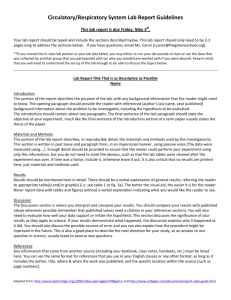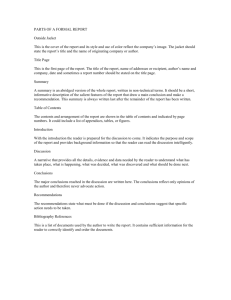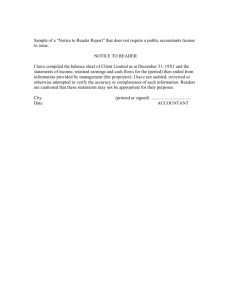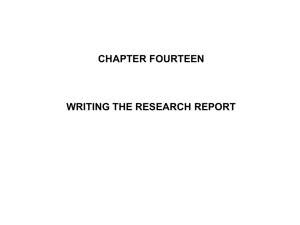How to Write an Introduction
advertisement
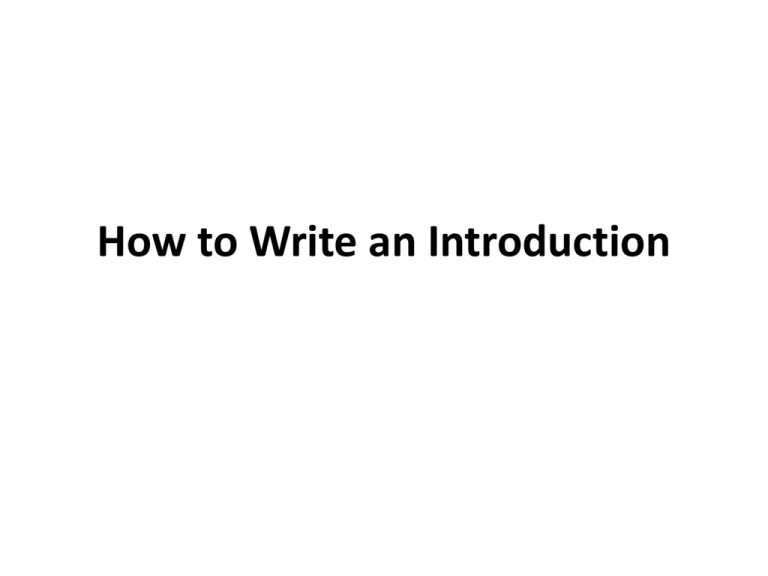
How to Write an Introduction Introduction • Knowing how to write an introduction is yet another part in the process of writing a research paper. • In the introduction, you are attempting to inform the reader about the rationale behind the work, justifying why your work is an essential component of research in the field. • In the introduction, you are attempting to inform the reader about the rationale behind the work, justifying why your work is an essential component of research in the field. • The introduction does not have a strict word limit, unlike the abstract [1], but it should be as concise as possible. • It can be a tricky part of the paper to write, so many scientists and researchers prefer to write it last, ensuring that they miss no major points. • For a longer research paper [2], where you use an outline [3], it can be useful to structure your introduction around the outline. • Here are a few outline examples [4]. • https://explorable.com/research-paperoutline-examples • The introduction gives an overall review [5] of the paper, but does address a few slightly different issues from the abstract [1]. • It works upon the principle of introducing the topic of the paper and setting it into a broad context, gradually narrowing down to a research problem [6], thesis and hypothesis [7]. • A good introduction explains how you mean to solve the research problem [8], and creates ‘leads’ to make the reader want to delve further into your work. • You should assume that your paper is aimed at someone with a good working knowledge of your particular field. • For example, a paper about evolutionary adaptations [9] need not go into too much detail about Darwin - it is fairly common knowledge. • A behavioral science paper only needs to mention Pavlov [10] and Skinner [11] in passing, as their theories are standard for any first year undergraduate. Background • Like in any good Hollywood movie, the first task of the introduction is to set the scene, giving your paper a context and seeing how it fits in with previous research in the field. • Whilst not the only way, this section, comprising the first paragraphs of your introduction, can be based around a historical narrative, from the very first research in the field to the current day. • In many fields, this could make up an entire essay in itself, so you have to stick to relevant information. Importance • This leads into the rationale behind the research, revealing whether it is building upon previous research, looking at something that everybody else has overlooked, or improving upon a previous research project that delivered unclear results. • This section can then flow into how you are going to fill the gap, laying out your objectives and methodology [12]. • You are trying to predict what impact your research will have if everything works as it should, and you ultimately reject the null hypothesis [13]. Limitations • The introduction is the place to highlight any weaknesses in the experiment from the start. • For example, an ideal experiment [14] should have perfectly randomized samples [15], but there are many good reasons why this is not always possible. • As long as you warn the reader about this, so that they are aware of the shortcomings, then they can easily judge the validity [16] of the research. • This is much better than making them wait until you point it out in the discussion [17]. Assumptions • You should also point out any assumptions that you make about conditions during the research. • You should set out your basic principles before embarking upon the experiment: any research will be built around some assumptions. • For example, if you were performing educational research, you may assume that all students at the same school are from a very similar socioeconomic background, with randomization smoothing out any variables [18]. Tips • There are a few tips that can help you write a strong introduction, arousing interest and encouraging the reader to read the rest of your work. • Keep it Short • A long and rambling introduction will soon put people off and lose you marks. • Stick closely to your outline for the paper [19], and structure your introduction in a similar way. Define the Problem • The entire introduction should logically end at the research question and thesis statement or hypothesis. • The reader, by the end of the introduction, should know exactly what you are trying to achieve with the paper. • In addition, your conclusion [20] and discussion [17] will refer back to the introduction, and this is easier if you have a clearly defined problem. Organization • As you write the paper, you may find that it goes in a slightly different direction than planned. • In this case, go with the flow, but make sure that you adjust the introduction accordingly. • Some people work entirely from an outline and then write the introduction as the last part of the process. This is fine if it works for you. • Once your introduction is complete, you can now think about attacking the rest of the paper.




